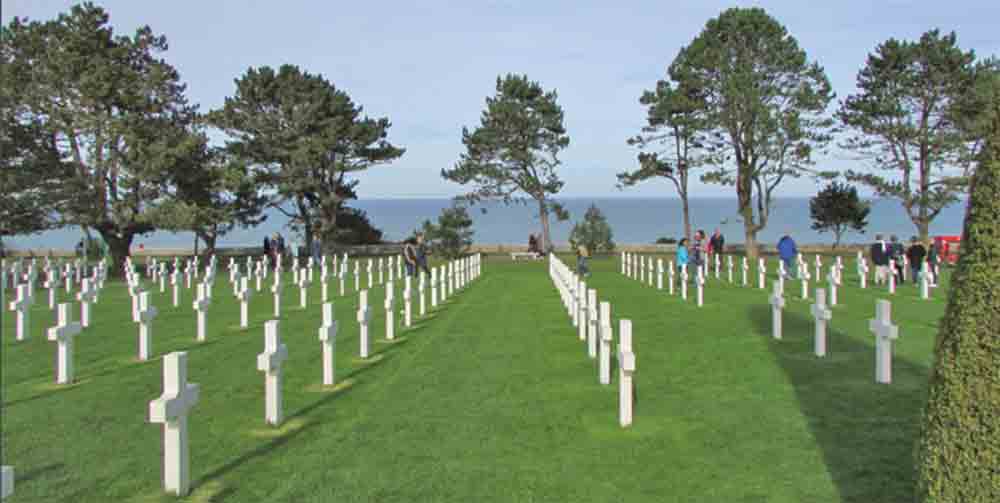
By Bobby and Barbara Morris
In 2018 in celebration of our fiftieth wedding anniversary we had the privilege of visiting the beaches of Normandy and the Normandy American Cemetery and Memorial, located nearby. Here are located the gravesites of 9,388 American military dead, most of whom were killed during the invasion of Normandy and subsequent actions leading to the end of World War II.
This was an incredible journey, a river cruise that began in Paris and had us travel along the historic and picturesque Seine River to Normandy. In Paris we saw so much, including Notre Dame Cathedral, the Louvre Museum (Rembrandt paintings and Leonardo da Vinci’s Mona Lisa, and much more), the Eiffel Tower, beautiful gardens, and Parisian sidewalk cafes. We walked along the Champs-Elysees to the Arc de Triomphe which honors those who fought and died for France in the French Revolutionary and Napoleonic Wars. Here we were reminded that many of history’s wars have included Paris and the French countryside.
Then onto our ship and the Seine River, to stops at quaint towns and villages with beautiful gardens and landscaping and cheerful villagers eager to welcome you into their village shops and quayside restaurants. Along the Seine, high on hill tops are castles we visited, and below, church cathedrals, many destroyed in wars and rebuilt. We stopped to view Joan of Arc statues and memorials in cathedrals, and then on to see the home, paintings, and garden of Claude Monet.
Then, finally, floating leisurely under blue skies on the calm river and through its numerous locks, we came to Normandy and stepped into buses for the ride through rolling hills and beautiful fields to the beaches of Normandy. The narrow beaches spread before us, seemingly endless, dunes of sand behind them and the blue of the ocean before them. There, waves from the English Channel softly lapped the sand. It was peaceful now, filled with tourists; nothing like it was on June 6, 1944, with hidden pill boxes and an artillery battery situated along a 200 ft cliff overlooking the sea. Here are the five beaches, Sword, Juno, Gold, Omaha, and Utah along a 50-mile stretch of French coastline where 156,000 American, British, and Canadian troops came ashore in a bloody amphibious assault that would eventually lead to the liberation of France and the end of WWII.
Departing the beaches, we traveled to the spacious and beautifully manicured Normandy American Cemetery and Memorial located on a bluff overlooking Omaha Beach. The 172-acre cemetery is the final resting place for 9,388 Americans; the site of so many white crosses, the waters below and flags flying above takes your breath away.
We read that among the graves was that of a father and a son. Four women have graves here, as do forty-five pairs of brothers. Our tour guide gave each of us a rose to place beside a cross. One was a yellow rose to place at the cross of one of the 304 unknown soldiers here. The other was a red rose that we placed at the gravesite of the first soldier we found who was from Texas. His name was Frank Glenn.
Our tour guide called us back together for a flag ceremony as the American flag was lowered in the cemetery at the end of the day. Taps played and those of us who were military veterans saluted. There were some tears. All in attendance proudly raised their voices in singing our National Anthem. Darkness had begun to settle over us as we traveled back to our ship for our return along the Seine to Paris. Yet for each of us, twilight was yet gleaming in our hearts as we said prayers of gratitude for freedom and self-sacrifice and thought about courageous Americans and the loving gold star families they left behind.











Comment
Comments